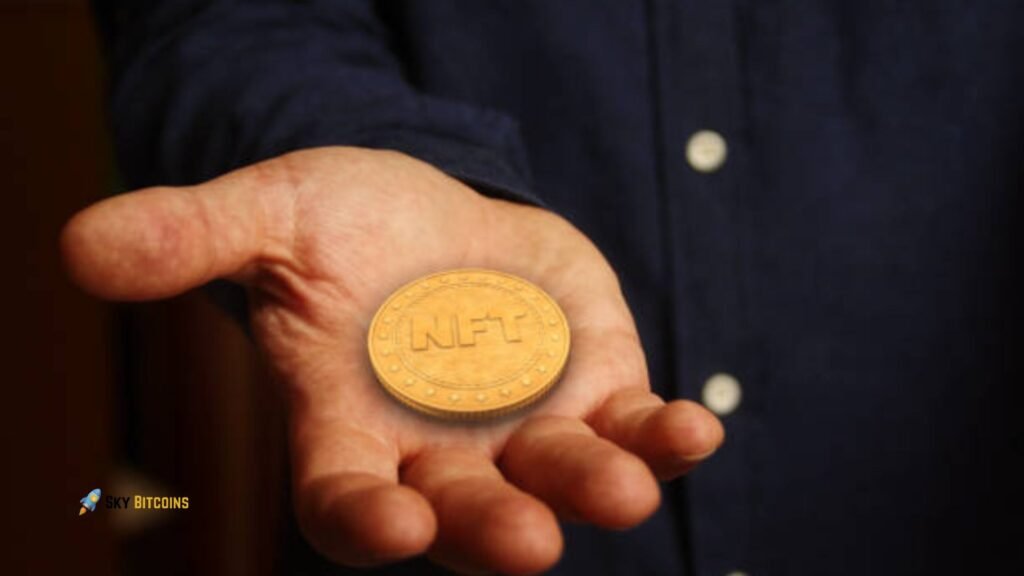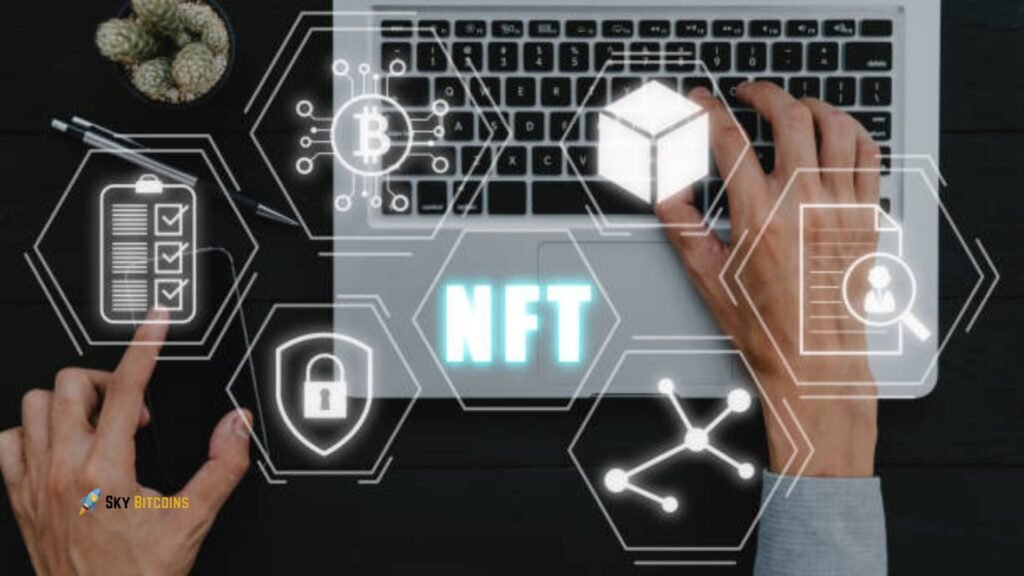A lot of people are crazy about NFTs or non-fungible tokens. Some of them sell for millions of dollars. But this makes a lot of people wonder: Why Are NFTs So Expensive? In this blog, the unique factors that make these digital assets so expensive are broken down. This opens up the world of NFT value and explains why people invest in them.
What Are NFTs?
Non-Fungible Tokens, or NFTs, are one-of-a-kind digital assets that use blockchain technology to prove who owns them and that they are real. Cryptocurrencies like Bitcoin and Ethereum can be used in place of other currencies or “fungible.” However, each NFT is unique and cannot be copied. Anything digital can be represented by an NFT, from music and art to video clips and virtual homes.
The blockchain, which is usually Ethereum, keeps a public record of events and ownership, making sure that each NFT is unique and has a clear history. Because they are safe and can be tracked, NFTs are very popular in the art world. They give artists a new way to sell and protect their work. People buy NFTs because they are rare, they give buyers ownership rights, and often they want the status that comes with having unique digital items. Even though there is disagreement about how long they will last and how much they are worth, NFTs have changed the way people think about digital ownership, opening up new possibilities for both creators and collectors in the digital age.
Key Components of NFT Value

- Scarcity: NFTs are often created in limited quantities, making them rare and desirable. The perception of scarcity drives up demand and value.
- Ownership and Provenance: Each NFT is linked to a unique blockchain record that verifies ownership and history. Provenance enhances an NFT’s value by confirming its authenticity and the creator’s reputation.
- Utility: Some NFTs offer additional functionalities, such as access to exclusive events, in-game assets, or membership in a community. This utility can increase their desirability and value.
- Cultural Relevance: NFTs tied to popular culture, trends, or significant events can command higher prices due to their relevance and emotional connection with buyers.
- Market Demand: Like any asset, the value of NFTs is influenced by supply and demand dynamics. High-profile sales and endorsements can create buzz, driving demand and prices higher.
Scarcity and Exclusivity: A Major Value Driver
NFTs derive much of their value from scarcity. For many buyers, the allure of owning something limited or even one-of-a-kind is highly appealing. Just like traditional art, limited-edition digital pieces gain value as they become rarer.
The Case of CryptoPunks
CryptoPunks, one of the first NFT projects, consists of 10,000 unique characters. This scarcity has led some of these characters to sell for millions. CryptoPunks have become a status symbol within the NFT community, embodying the exclusivity and digital scarcity that drives value in the space. Why Are NFTs So Expensive, “The value of NFTs lies not only in their scarcity but also in the blockchain verification process that guarantees ownership and authenticity,” explains NFT expert Sarah Bernard.
Demand and Community: Why People Are Buying
- Community Involvement: Many NFT projects cultivate vibrant communities where members interact, share experiences, and collaborate. This sense of belonging encourages individuals to invest in NFTs as a way to be part of a larger movement or culture.
- Social Status: Owning certain NFTs can serve as a status symbol, showcasing one’s tastes and financial savvy. Exclusive collections or limited editions often attract buyers looking to elevate their social standing within these communities.
- Cultural Trends: The rise of digital art, music, and gaming has created a cultural shift where NFTs represent not just ownership but also participation in a new digital economy. Buyers are drawn to the novelty and potential of being early adopters in this evolving landscape.
- Peer Influence: As high-profile individuals and influencers endorse or purchase NFTs, their followers often feel compelled to join in, creating a ripple effect of demand driven by social validation.
The Role of Creator Reputation and Rarity
Reputation plays a significant role in the value of NFTs. Well-known artists, celebrities, and brands entering the NFT space create a premium on their NFTs simply through recognition. For instance, when digital artist Beeple sold an NFT artwork at Christie’s for $69 million, it highlighted how a creator’s reputation could boost an NFT’s value.
Real-World Parallels: Art Collectors and NFT Collectors
Just like a painting by a famous artist fetches more on the market, an NFT from a recognized creator carries a higher price tag. This isn’t just limited to visual artists; musicians, actors, and even sports figures have leveraged their reputations to create valuable NFTs that resonate with fans. “People will pay a premium for NFTs tied to public figures or creators with established reputations. It’s the digital version of owning a piece from a famous artist,” notes NFT market analyst Oliver Trent.
Blockchain Technology: The Underlying Infrastructure
Cryptocurrencies like NFTs are built on blockchain technology, which makes digital ownership safe, clear, and easy to check. A blockchain is basically a decentralized, shared ledger that keeps track of events across many computers in a way that is safe and can’t be changed. This infrastructure is necessary for NFTs because it ensures that each digital object is unique and hard to get. When a new NFT is made or “minted,” it is given a unique number on the blockchain. This makes it easy to find and confirm that it is the real thing.
Also, because blockchain is decentralized, there are no middlemen needed. This means that artists can directly connect with buyers. This decentralization also builds trust because the public can see the past of who owns each NFT. This makes fraud less likely. Smart contracts and blockchain security protocols also automate tasks, so authors of NFTs can get royalties every time one is sold again. Blockchain technology changes the way digital goods are owned and traded because it is the foundation of NFTs.
How Pricing Works in the NFT Marketplace
- Scarcity and Rarity: Unique or limited-edition NFTs tend to have higher value due to their exclusivity. Rare attributes, often defined by creators or coded into digital collectables, make certain NFTs more desirable.
- Creator Reputation: Artists, influencers, and brands with established reputations or large followings command higher prices. Buyers often value NFTs from well-known creators more highly, as they believe these assets hold greater potential for future appreciation.
- Utility and Functionality: Some NFTs offer additional perks, like access to events, exclusive content, or in-game items, which can increase demand and pricing.
- Market Demand and Trends: Prices are also shaped by current trends, sentiment, and buyer interest. Demand for certain types of NFTs can drive up prices rapidly, reflecting broader market cycles and hype.
- Platform and Network: The platform on which an NFT is listed (e.g., OpenSea, Foundation) and the blockchain used (e.g., Ethereum) can impact its cost due to varying transaction fees and user bases.
The Skeptics’ View on NFT Value
While NFTs have gained popularity, sceptics argue that they are overpriced. Some believe that NFTs lack intrinsic value since they are intangible. Critics also raise concerns over the speculative nature of NFT pricing, comparing it to a bubble that could burst.
Environmental Concerns
Environmental impact is another critique. NFTs minted on certain blockchains have a high carbon footprint, which raises ethical questions. As a result, some environmentally conscious collectors hesitate to participate, questioning the long-term viability of NFTs.
Insight from Industry Critics
Digital asset analyst Emma Lopez points out, “The environmental concerns and the speculative prices of NFTs make them a risky investment for some. Not everyone is convinced of their staying power.”
The Future of NFT Pricing
As the market grows and technology improves, NFT prices are likely to change in big ways in the future. One important trend is that utility is being added to NFTs more and more. This means that assets are giving real benefits, like access to special material, virtual events, or better gaming. This extra feature will likely make more people want it, which is why prices should go up. We can also expect a wider range of pricing models as more fields, such as music, art, and gaming, see the promise of NFTs.

There may be a rise in dynamic pricing strategies that change based on real-time market factors and demand. This would make valuations more flexible. Also, more rules and regulations in the NFT space are likely to boost buyers’ trust, which will make investment and speculation stronger. As teaching materials get better, more people will understand how valuable NFTs are. This will make the market smarter, which could help keep prices stable in the long run. In general, NFT pricing will get smarter and better fit into digital markets in the future.
Also Read: Bitcoin Mining on a PC: A Comprehensive Guide
In summary
Several factors contribute to the high price of NFTs, including their scarcity, the reputation of their creators, the demand from the community, and the security of the blockchain. Despite naysayers, the expanding market for NFTs indicates a continuing fascination with digital ownership. For individuals enthralled by the digital revolution, NFTs provide an exciting and revolutionary investment opportunity, but it’s prudent for buyers to be aware of the hazards associated with any new asset.
In an increasingly digital world, NFTs offer a platform for ownership, collection, and trade in an environment that values originality, creativity, and authenticity. Regardless of whether prices remain volatile or finally level out, NFTs have already changed the way we think about digital ownership.


